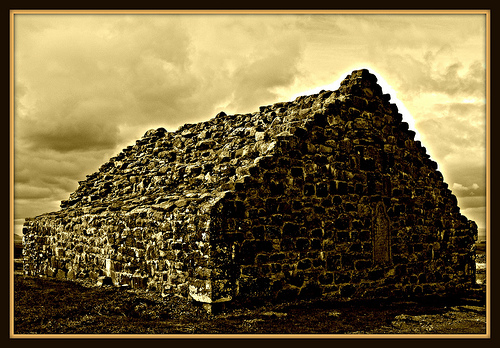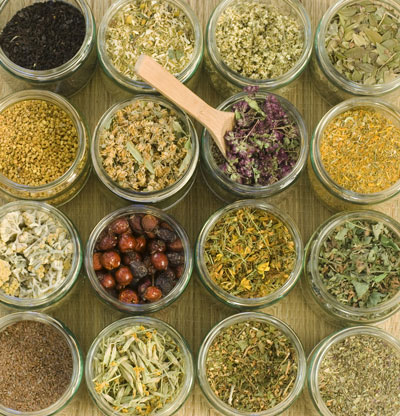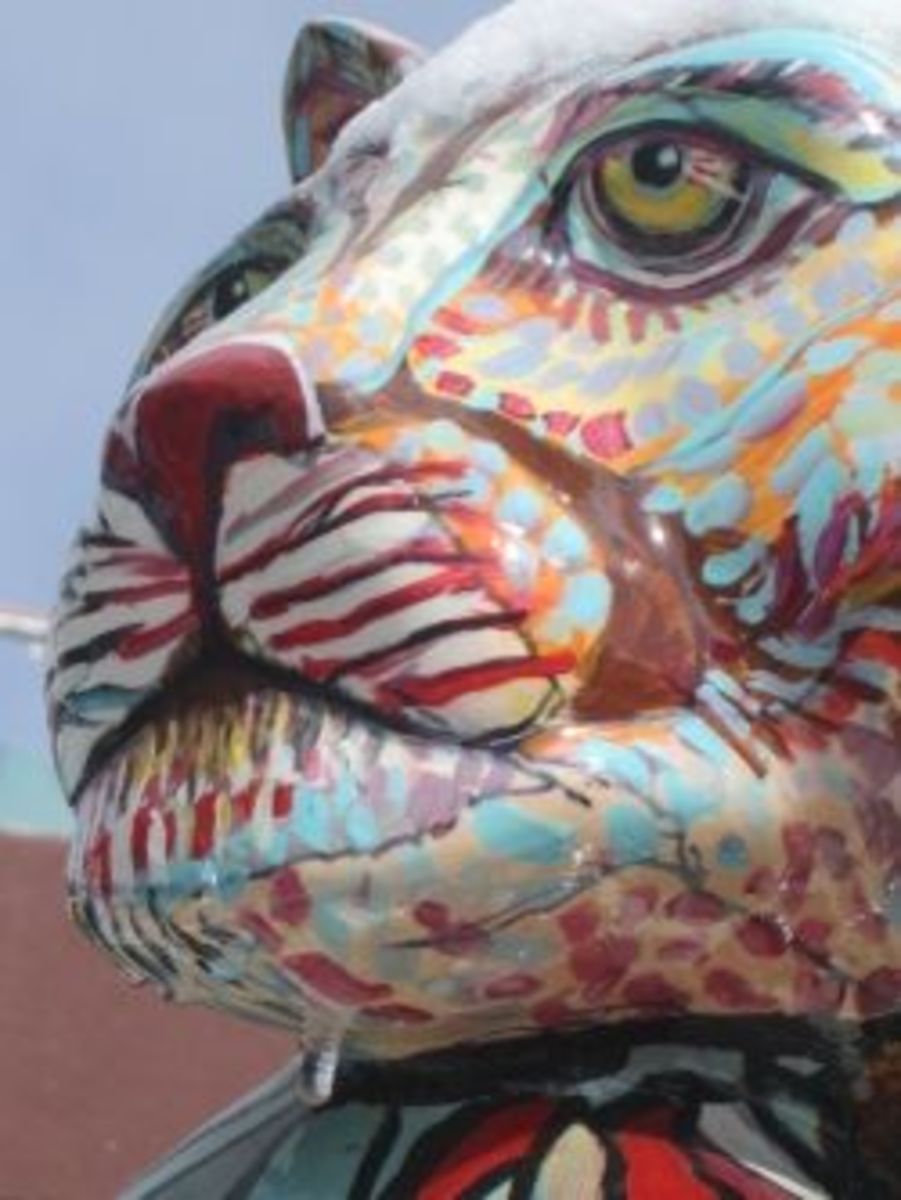Soutra Aisle An Ancient Scottish Hospital

Monks at Soutra
High in the Scottish borders, lie the Lammermuir hills; site of an ancient hospital. A barren, remote area where geography forms a natural barrier and divide between Scotland and her sister country, England to the south.
In this windswept spot are the remains of Soutra Aisle, a monestary and hospital, founded in 1164 AD.
This was the site of the Ancient Holy Trinity run by the bretherns and master of the Augustinian order 17 miles South of Edinburgh.
Established in 1164 by the Augustinian Monks at the request of Malcolm IV, King of Scots Soutra Ailse is the only remaining building of a once large complex which comprised a hospital and friary. Funding came from estates owned by the monestary and from wealthy former patients of the hospital. In its time this was the largest and best funded hospital in the whole of mediaeval Scotland. The House of the Holy Trinity at Soutra was a hugely important institution within medieval Scotland, and covered an area of 700 square metres.
At 1200 ft. above sea level this was the highest of the 2000 monestaries in the British Isles - set in a stunning location.
Although once a substantial monestary, little of the former building still remains above ground.
The fine red sandstone has been carted away to use for other building projects in the local area.
Soutra Aisle was built on Dere Street, the main road established by the Romans, linking London and York to Scotland. This was the main arterial road running the length of Britain.Here the poor passed through a huge gatehouse where they would gratefully receive alms, food and medical attention. The monestary also gave a welcome to travellers, and sanctuary to fugitives.The hospital was well known throughout Europe.
From 1147 to the 15th century this was a busy hospital; around 300 people would have permanently lived there, there must have been 300 or so people permanently living on the site servants, monks, cooks to cope with the numbers of guests, visitors and patients. Thousands of patents have been treated at the hospital in those 400 years, and evidence of this has been left behind as human and medical waste, much of it lying in impenetrable clay pits.
Several blood pits have been found, containing the solidified blood , bones and body waste of patients.Bleeding was a common medical practice at the time, Bacterial spores of tuberculosis, anthrax and other pathogens have been found, mixed with the human waste. A large number of seeds and herbs used in medicine have also been excavated since 1986 including cloves and other botanicals from Asia and Africa.


An Ancient Apothecary
Recent archaeological excavations which began in 1986 have revealed a trove of ancient plant medicines suggesting that the monks had a huge array of botanical pharmaceuticals in their armoury.
The pits of 800 year old medical waste have began to reveal some very interesting secrets.
These excavations at Soutra have given an view into the workings of the medieval hospital. Archeologists have had to progress with caution, as the sites themselves are potentially dangerous, with high levels of lead and viable bacterial spores of potentially fatal diseases.
Much of this evidence has been excavated from several blocked drains, perhaps blocked deliberately, and one in particular was found to contain a large number of anthrax spores. Perhaps the monks knew of this and were trying to prevent the spread of this infection.
A complex system of sampling techniques have been set up by archeologists, material is examined for blood, lead contamination, presence of pathogens and foreign or medicinal plant material. Fins are catalogued and stored. Pieces of imported pottery have been found, broken ointment jars and bottles. Traces of medicines have been found adhering to the pottery and from pieces of fabric, presumably bandages and dressings.
A total of 230 plant species known to have medical uses have been found at the Soutra site. Many of these are exotic and foreign herbs and plants which would have to have been imported from abroad as they do not occur anywhere in Britain. Nutmeg has been unearthed, which at that time was grown only in a few Indonesian Islands. Other exotic material too: frankincense, pepper, ginger, cloves and myrrh. Evidence in the form of pollen has also revealed that cannabis, flax and the opium poppy were being cultivated at the friary. None of these plants were indigenous, so the seeds must have been imported. THese finds have all been dated to the early 14th Century.
Another find dated to the same period was juniper berries and the ergot fungus.
Ergot fungus can prove fatal if eaten and may be ingested unknowingly as the fungus attacks rye and other cereal crops.
Ergot also has a medicinal use in closing uterine blood supply, and has been used for many years to induce abortion or to stop uterine bleeding following childbirth.
Another find, dated to the same period in the early 14th century, has revealed the presence of the deadly ergot fungus, and berries of the juniper bush. The black ergots are the resting stage of a parasitic fungus that attacks cereal crops. It is now known that ergot contains alkaloids including ergometrine, which causes catastrophic contraction of the uterus.
Similarly juniper berries have been used to stimulate the uterus, speeding up or inducing labour, or to trigger abortion.The evidence tends to suggest that the monks were performing midwifery services at the hospital. Fragment of bones from a fetus have been found. Augustinian monks were forbidden from practicing midwifery, but these services may have been offered at the hospital perhaps by visiting female midwives, or illegally by the monks themselves.
Seeds of hemlock, henbane and the opium poppy were found together. These three deadly herbs when used in combination were a powerful- if dangerous general anaesthetic.Evidence from a medieval manuscript describes how this powerful concoction could render a man unconscious for up to three days, allowing surgeons to carry out major surgery.
The Scenic Landscape of the Scottish Borders Hides a Grisly Past

A Miracle Cure for Obesity?

A Modern Cure for Obesity
An ancient Scots folk remedy which suppresses hunger pangs could be developed as a 21st century slimming aid. Amongst the botanical remains were large quantities of Bitter Vetch or Heath Pea This plant has been used during times of famine. When the roots are crushed, boiled and eaten, the appetite is suppressed to such an extent that individuals would feel no hunger for weeks or months.
Bitter Vetch and gave it to people to ward off hunger when crops failed, and to soldiers to so they could continue to march on an empty stomach. Commonly found throughout Europe, but not in Scotland, this plant seems to have been cultivated locally. Now a project has been set up to investigate the remedy as a possible modern slimming aid or drug to combat obesity..
You may also like
- Who is the Devil?
It is not a coincidence that Satan is depicted as a half man, half human horned icon brandishing a serpent. This ancient figure was a powerful deity in Celtic times. - The Wizard of Yester and the Goblin Hall - A Scottish Castle Built by Goblins
The Goblin Hall at Gifford once the home of the Wizard of Yester is a unique and chilling taleof East Lothian in Scotland. Known locally as the Goblin Ha the legend still haunts locals and visitors alike. - Edinburgh Vacation on a Budget
Visit Edinburgh on a budget; Scotland's capital. Visit the Old Town Royal Mile without spending too much - Ghosthunting in Edinburgh
Edinburgh, Scotlands's Capital city is one of the most haunted cities in Europe.Wonderfully preserved architecture with cobbled streets lends atmosphere to this fine city. Edinburgh ghosts are around every corner. - Edinburgh Vacation In Winter
An Edinburgh vacation in winter should be at the top of anyone's must visit destinations. With an atmospheric medieval old town with many tales and hauntings to the rugged Cliff top setting of Edinburgh castle. A warm welcome awaits in Edinburgh- Sco - Roslin Glen Carvings Hold Neolithic Secrets of Da Vinci Code
The site of Rosslyn Chapel is steeped in history. Hawthornden carvings deep below in Roslin glen below give some clues to much older origins of this sacred spot. Could the site be older than any of us may imagine, and actually have been a spiritual s - Visiting Edinburgh for a Summer Vacation



